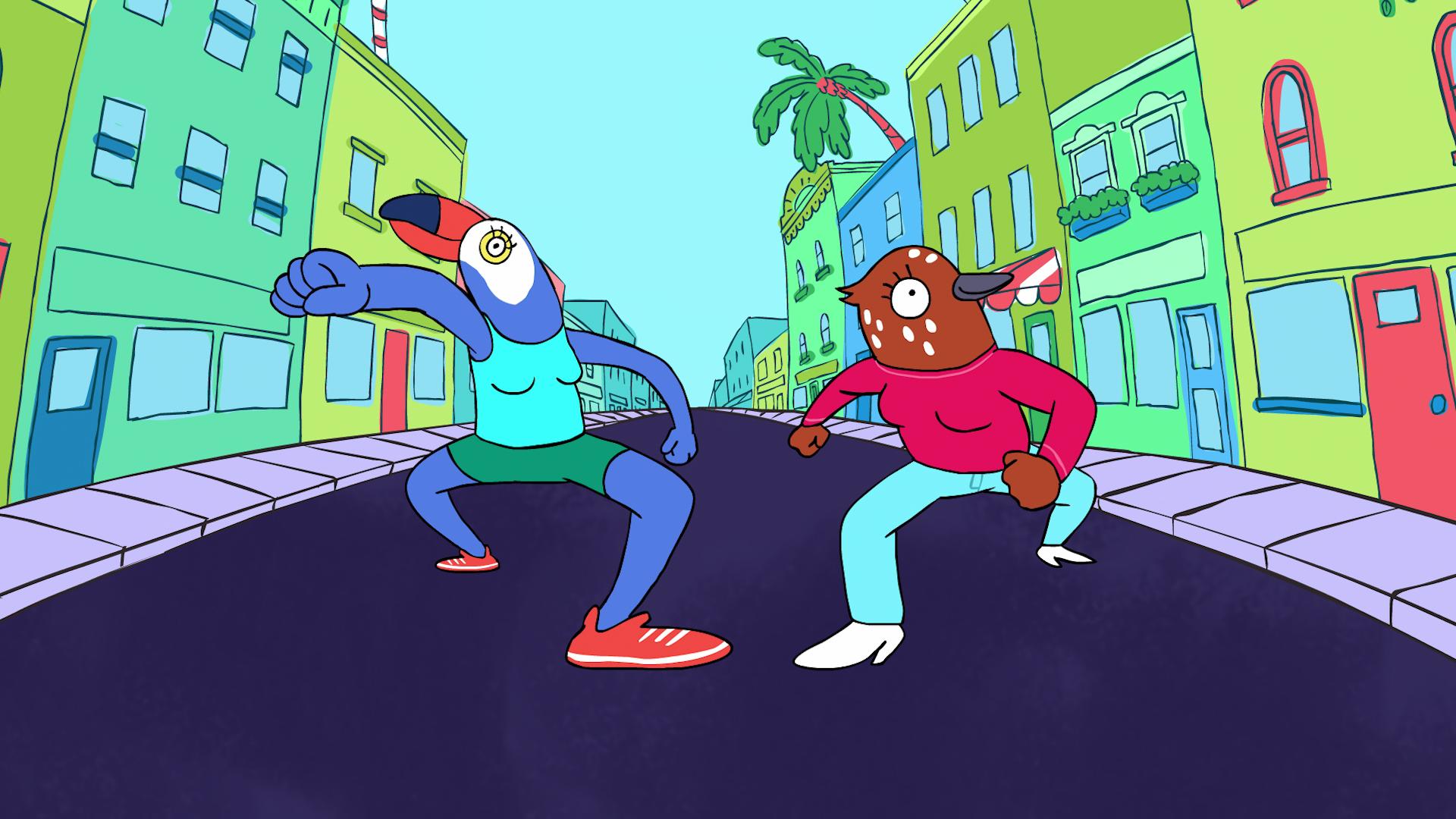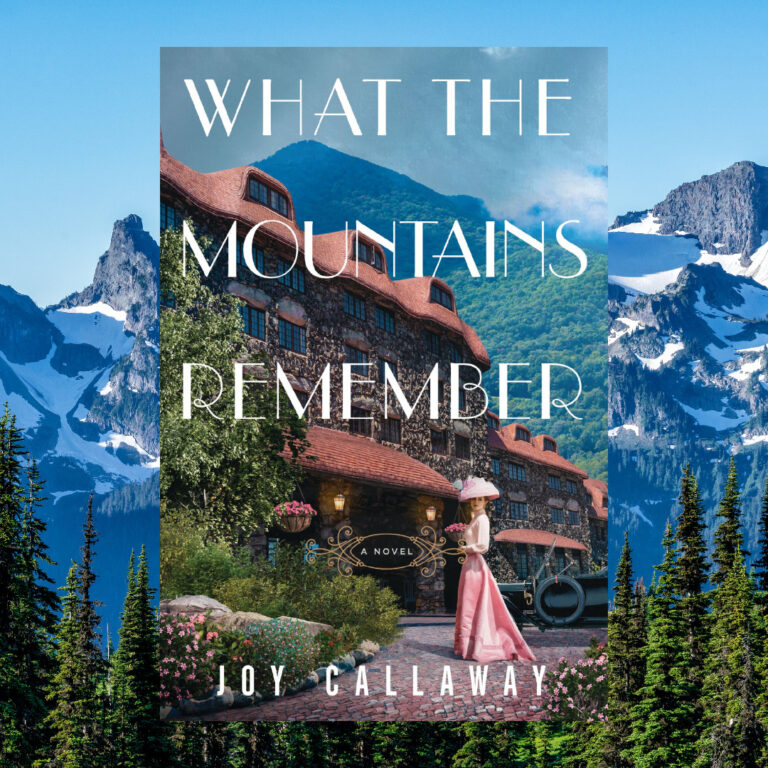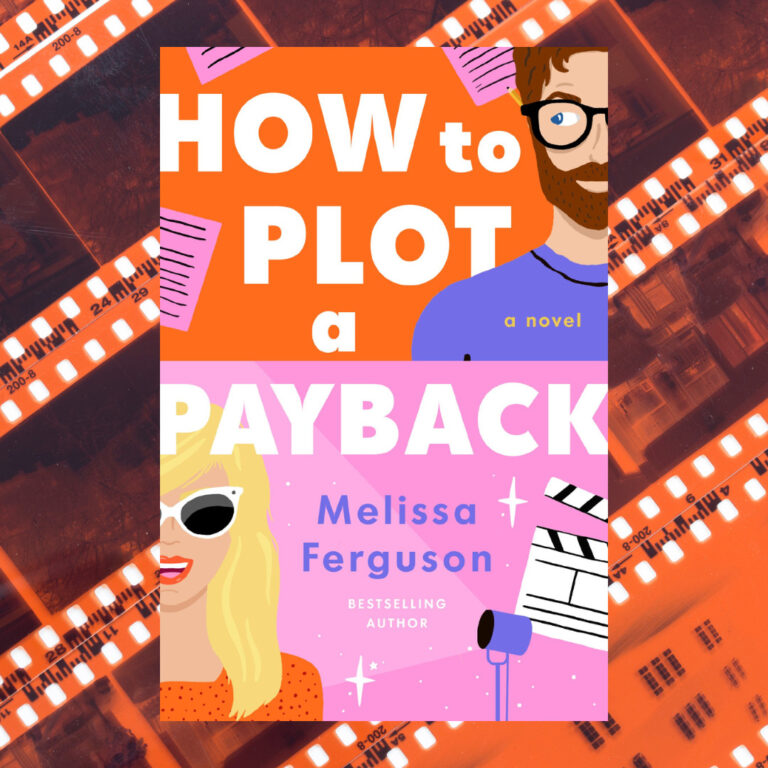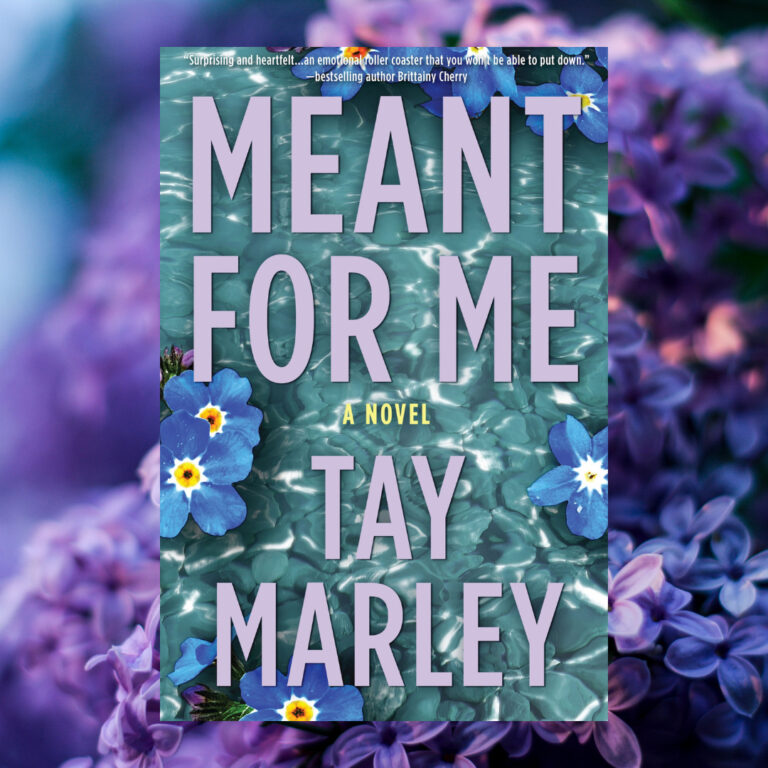In need of something joyful, colorful, silly and girl-power-y? Then click the “watch now” button as fast as you can for Netflix’s Tuca and Bertie!
The show follows its titular characters, Tuca the Toucan and Bertie the Song Thrush through various adventures in their best friendship. Bertie’s boyfriend, the dorky but lovable Speckle (also a bird!) has just moved in with her, which prompts Tuca to move to her own apartment…one floor above the couple.
First, let’s get this out of the way: Tuca and Bertie is most likely to be compared to two other critically-adored comedies: Bojack Horseman and Broad City. Tuca and Bertie shares some members of its creative team with Bojack Horseman and so the shows are visually similar with humanoid animals populating its world and subtle in-jokes populating the background scenery.
As for the Broad City comparisons? Well, Tuca and Bertie’s emotional core is focused on the friendship and antics of two women in their late 20’s/early 30’s. And just like Broad City’s Abbi and Ilana, one friend is mostly Id while another is predominately Ego.
But don’t be fooled: even with these favorable comparisons it’s important to realize that Tuca and Bertie is…well…its own animal entirely.
Here are some of the things that make Tuca and Bertie a unique, wonderful show to check out!
Its Surreal Tone Keeps You On Your Toes
It’s well known that good comedy is often made by setting up expectations and then subverting them.
Tuca and Bertie’s comedy is unique because the show’s style seems to say, “Expectations? What expectations?! Let’s just subvert everything!”
The first clue that Tuca and Bertie isn’t your average animated comedy is the pair of bouncing breasts that appear to belong to a building in the opening credits. Other clues that viewers are in for a wild ride include the eye-popping colors, bopping soundtrack, and loud, rapid dialogue.
Furthermore, this is the kind of show that uses the “anything goes” possibilities of its animated format to its advantage. A thought bubble that indicates ideas to the audience will all of a sudden become something that characters will actually manipulate and interact with! There are examples of physics-defying tables that loop like rollercoasters yet keep food in place, hanging upside down. The subway system seems to be an actual snake with doors and seats built in, and no one bats an eye.
And just when you think you’ve caught up to Tuca and Bertie’s wild animation style, it throws a curveball with brief moments of real-world pictures of pastries, imagined sequences comprised of stop-motion clay, and a silhouette-based form of animation that is reminiscent of paper cuttings.
All of these wacky things could make the show a jarring mess, but instead they contribute to a cumulatively wonderful product that is exhilarating to behold.
Sometimes It Takes A Cartoon Bird To Showcase Deeply Human Experiences
Even though Tuca and Bertie inhabit a wacky cartoonish world, they are far from one-dimensional.
As the season went on, I was fascinated by the idea that these two characters had lives of their own before they flew onto my screen and they could have many adventures off screen after the season was over.
Specifically, Tuca and Bertie inserts viewers in the protagonists’ everyday life instead of just showing us the biggest, most pivotal moments of their stories. In the very first episode, a single line of dialogue informs us that Tuca is somewhat recently sober. Future episodes indicate what pre-sobriety Tuca was like, but we do not see her “rock bottom.” We don’t have to see this, because she is already a fully-formed character, and sometimes the most dramatically interesting stories happen after a big “a-ha” moment.
Similarly, Bertie is a character who obviously experiences anxiety. Personally, the way she experiences anxiety with symptoms like refusing to go outside when facing a looming task or wondering what she’s supposed to do in a coworker interaction were super relatable. And while a later episode contextualizes a traumatic incident in Bertie’s life, it’s not positioned as a single event that made her the “fussbudget” she is.
There are numerous other examples of the ways the characters on Tuca and Bertie are fleshed out and (pardon the pun) well-drawn. There’s something remarkable about the way this show refuses to make character traits like sobriety and mental health the topic of “very special episodes” in the vein of other amazing shows like Netflix’s One Day At A Time. Tuca and Bertie just lets Tuca and Bertie be themselves, and the storytelling benefits from added complexity and nuance.
Diverse Voices Make All The Difference
Animation and comedy are both two realms of entertainment that have historically been dominated by white men. That’s why it’s so important that Tuca and Bertie features diversity of all kinds behind the scenes.
First, there’s the main voice cast. The three main characters, Tuca, Bertie and Speckle are played by Tiffany Haddish, Ali Wong and Steven Yeun. This alone helps subvert the trend of white guys who get the lead roles in comedy and animation. All three of these voice actors breathe life into their characters, and it’s wonderful to have another platform for them to shine!
But that’s not all! Tuca and Bertie was created by Lisa Hanawalt, a major contributor to Bojack Horseman. And a cursory glance at the show’s IMDB page shows that there are numerous writers and directors who are women and racial diversity on staff.
In the case of Tuca and Bertie, it’s easy to see how a variety of voices from different backgrounds obviously contributed to the nuance, humor and overall quality of this show. Tuca and Bertie shows us that when more perspectives and voices are welcomed to the table, the art produced can be so much richer and even groundbreaking.
There’s no greater example of this, in my opinion, than the show’s ninth episode. A somewhat form-breaking “road trip” episode is used to mend the main characters’ friendship as they confront some of their major issues. Toward the end, there’s an empowering sequence involving cartoon bird women of different ages, backgrounds and sexual orientations that could feel hollow or unearned in another creator’s hands. However, I fully believe that the gender and racial parity behind the scenes contributed to showcasing different personalities and perspectives that made this moment so hilarious, frantic and impactful that I ended up crying with a big ol’ grin on my face.
Honestly, I could go on and on about how great and interesting Tuca and Bertie is. From the background jokes to the emotional honesty to the simply delightful gif-able moment of Bertie celebrating eating spicy chips, there’s so much to love and appreciate about this show. So do yourself a favor, and check out this wacky romp with two besties!












